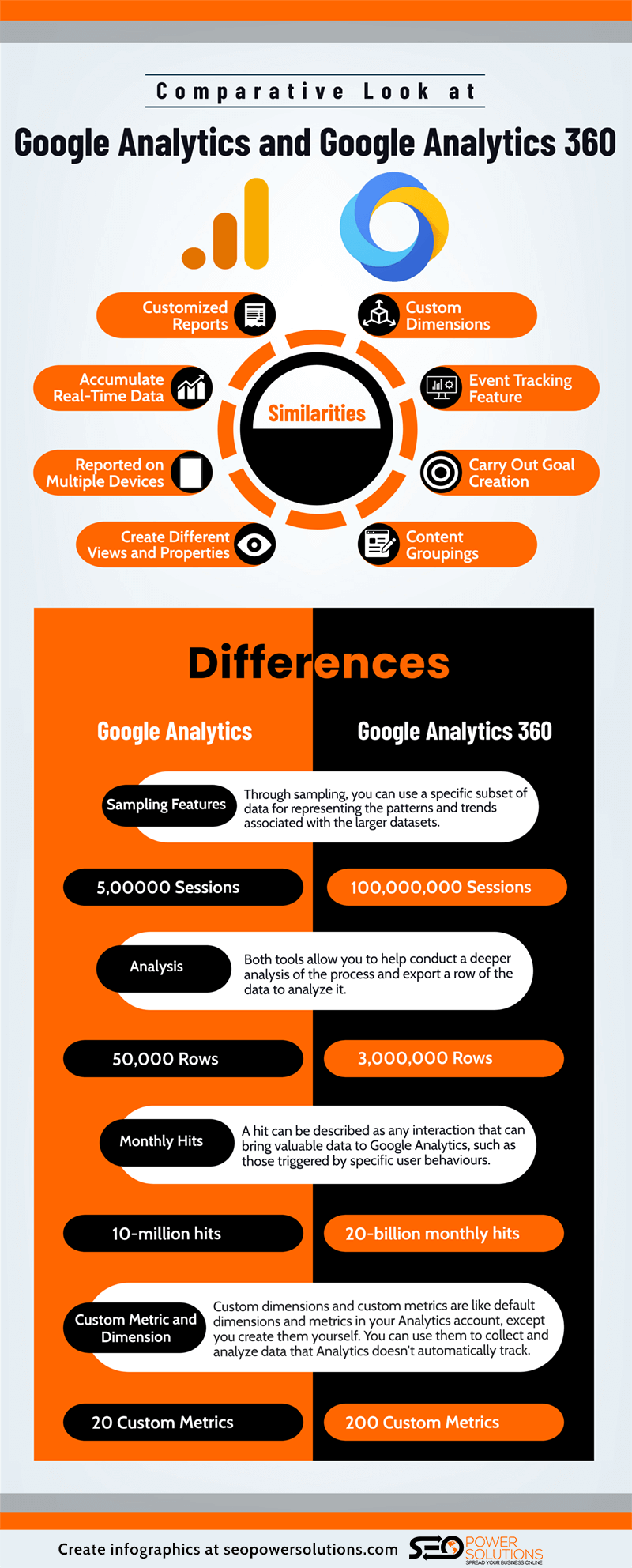What is Google Analytics?
Google Analytics function as a free web-based platform service created by Google. It tracks and reports different on-site activities like user-defined conversions, pages per session, bounce rates, and other essential details. It is an indispensable tool for digital marketing. Thus, Google Analytics can help marketing professionals use data for coming up with smart-end and far better decisions. Google Analytics is also evolving constantly to ensure a better experience for the end-users. Multiple new updates, such as new insights according to the last-click attribution, multiple cross-domain measurements associated with web data streams, innovative revenue metric and ‘Analytics Intelligence’ makes Google Analytics one of the most progressive tools for understanding the online marketing requirements.


What is Google Analytics 360?
Google Analytics 360 or GA 360 is a more advanced tool for managing complicated analytics requirements. It provides greater flexibility when it comes to coming up with customized metrics. The GA 360 tool can also remove some of the limitations present with the free tool of Google Analytics. However, it can be a very costly tool for a lot of business enterprises. So, let’s compare the similarities and differences between Google Analytics and Google Analytics 360 so that you can have a better idea as to which one is the most suitable for you.
Similarities between Google Analytics and Google Analytics 360
- Both these programs can help you to create customized reports
- You can benefit from using custom dimensions with both these tools
- Both of them can help you to collect and accumulate real-time data
- They can offer you easy to use event tracking features
- You can have reported on multiple mobiles, social and video devices
- They can help you to carry out goal creation for your projects
- Both these tools can create different views and properties
- You can have content groupings with these tools


Differences between the Google Analytics and Google Analytics 360
- The most critical difference between Google Analytics and Google Analytics 360 lies in their sampling features. Through sampling, you can use a specific subset of data for representing the patterns and trends associated with the larger datasets. While using Google Analytics, you can have sampling around 500000 sessions, but with Google Analytics 360, you get to make sampling close to 100,000,000 sessions.
- Another benefit of using the Google Analytics 360 tool is that it allows you to conduct a deeper analysis of the process, and you can even export as many as 3,000,000 rows. On the other hand, Google Analytics can only help you to work with 50,000 rows.
- Google Analytics 360 tool can provide you with a limit of 20-billion monthly hits, whereas you only get 10-million hits every month with Google Analytics. A hit can be described as any interaction that can bring valuable data to Google Analytics, such as those triggered by specific user behaviours. For many marketers and business owners, the 10-million hits limit that comes with Google Analytics can be a source of hindrance that does not allow them to benefit from the creation of event tags.
- Google Analytics 360 can offer up to 200 custom metrics and dimensions, but you only get 20 with Google Analytics. The custom metric and dimension in Google Analytics are user-defined metrics not defined automatically within the Google Analytics tool. It means that users get to have more flexibility and scope for innovation with Google Analytics 360.
Which one would be best for you?
Whether Google Analytics would be sufficient, or a business owner needs to opt for Google Analytics 360 will depend on the specific requirements of the business. For most companies, the standard Google Analytics will be sufficient as they won’t even need to use the extended features of Google Analytics 360. Here are some occasions when the Google Analytics 360 might become necessary.
- Numerous sub-domains are present with unique Google Analytics accounts.
- Unique and specific requirements of metrics and dimensions can’t be managed with Google Analytics.
- Enhanced online presence with extensive user interaction requirements.
- More extensive requirements for customization and flexibility
- Fast-growing business with greater sampling needs.
If you want to embed this infographic on your website then please copy and paste the below code on your website.
<img src="http://seopowersolutions.com/wp-content/uploads/2021/11/Google-Analytics-Vs-Google-Analytics-360.png" alt="Diffrence between Google Analytics vs Google Analytics 360" width="600" height="1440" class="aligncenter size-full wp-image-57703" />
So, if you have such advanced analytics requirements, it would make more sense for you to opt for Google Analytics 360.


